Every year at the Landgestüt Celle, a State Stud in Germany, people come from all over the country to see the magnificent Hengstparade (Stallion Parade).
The Hengstparade begins with a historical overview of how the Landgestüt Celle and the sport horse have evolved. To my knowledge, we do not have any events of a similar nature in the United States, and thus, this blog will attempt to relay both the experience of the event as well as its history—through pictures and words.
Built by the King in 1735, the Landgestüt Celle began—depicted below by the King’s carriage and horses.
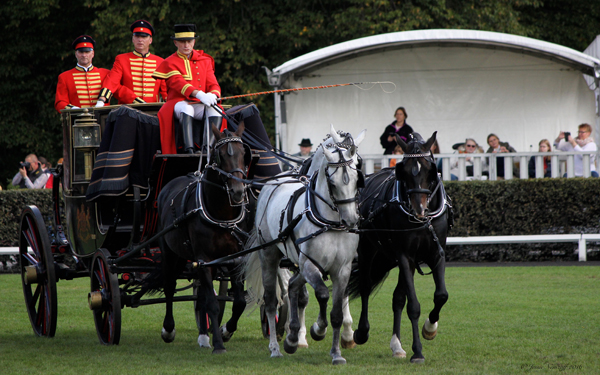
The King built Landgestüt Celle in 1735. Photo by Jessica Nemzoff
Upon completion of construction, 13 stallions were brought to Landgestüt Celle, today there are 120 active stallions.
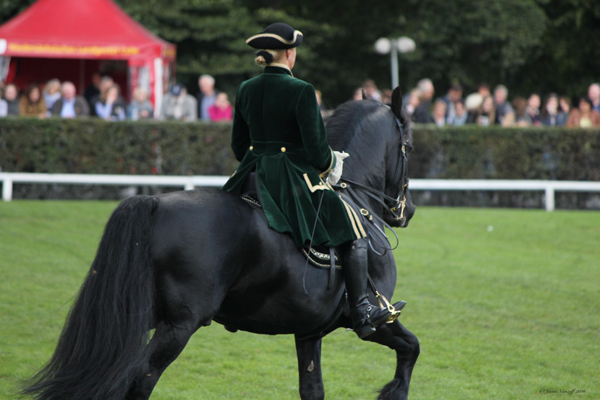
13 stallions came to Celle. Photo by Jessica Nemzoff
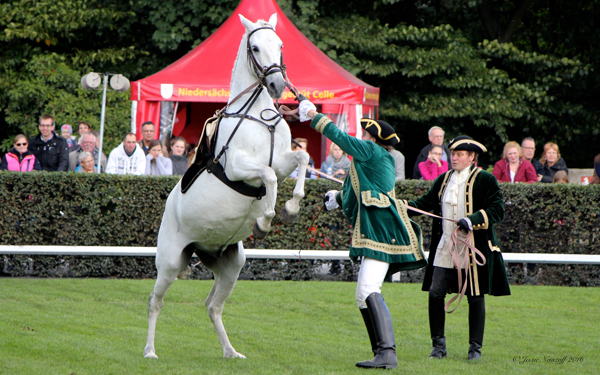
A beautiful white stallion demonstrates some of the early training techniques at the Landgestüt Celle during the 1700’. Photo by Jessica Nemzoff
During the 1800’s the Landgestüt Celle was opened up the farmers to breed horses for work in the field, as well as for horses that could be used in the army. The following are some of the tasks horses assisted with before the use of machines:
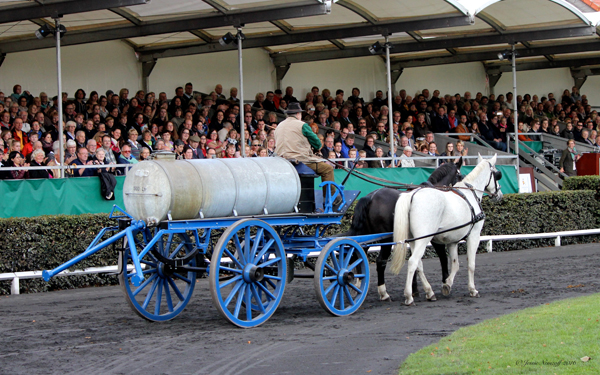
To transport water. Photo by Jessica Nemzoff
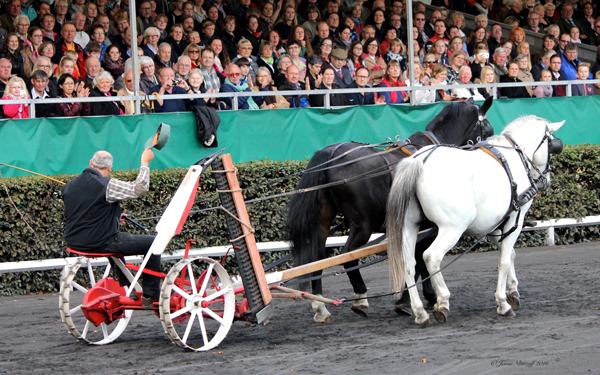
To cut the hay. Photo by Jessica Nemzoff
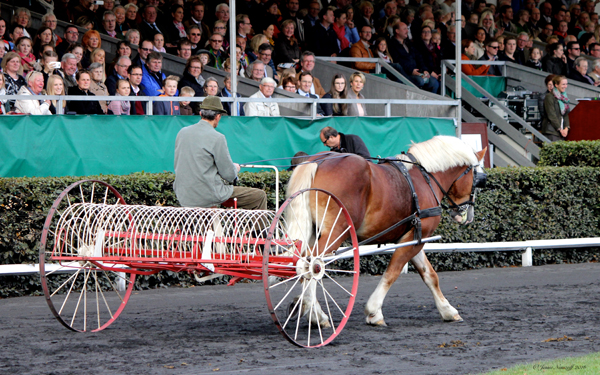
To gather the hay. Photo by Jessica Nemzoff
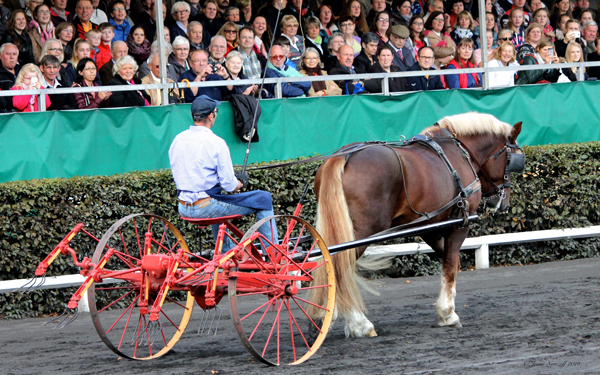
To bale the hay. Photo by Jessica Nemzoff

To gather potatoes. Photo by Jessica Nemzoff
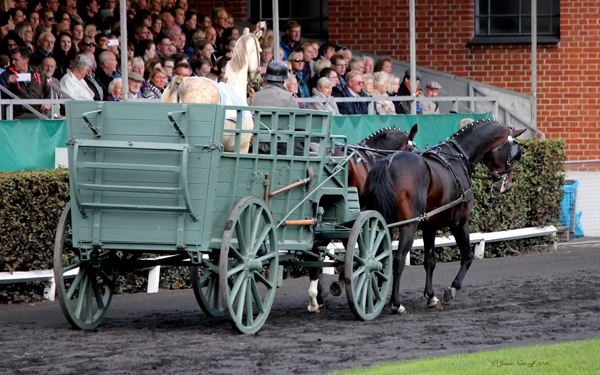
To transport other horses. Photo by Jessica Nemzoff
ADVERTISEMENT
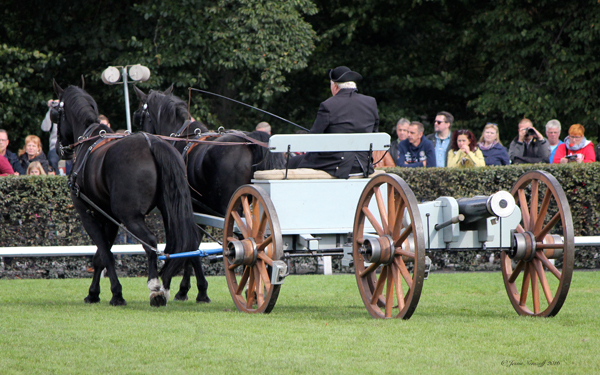
To assist with military tasks. Photo by Jessica Nemzoff
With the rise of machinery and tractors, came the decline of the use of horses for farming activities. As the need for horses on the farm declined, the focus of the breeding programs transitioned from work horses to sport horses.
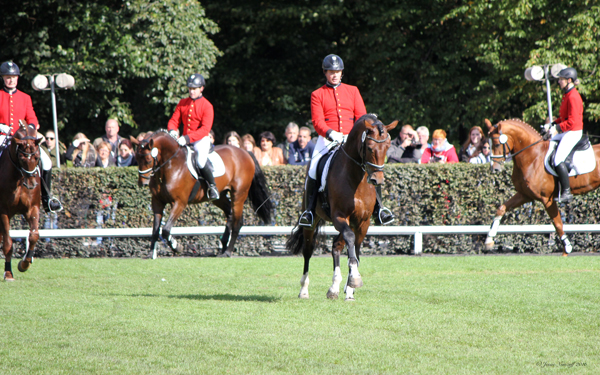
With the invention of machinery for farming, the need for working horses declined, and then came the rise of the sport horse. Photo by Jessica Nemzoff
However, during the transition, horses were still used for other rather interesting things, such as pulling the gambling bar on wheels. While traveling to their respective destinations, horses could also be found being led behind a bike, a tradition that can still be seen to this day. From pulling the fire-fighting cart to delivering the milk, horses were a part of everyday life.
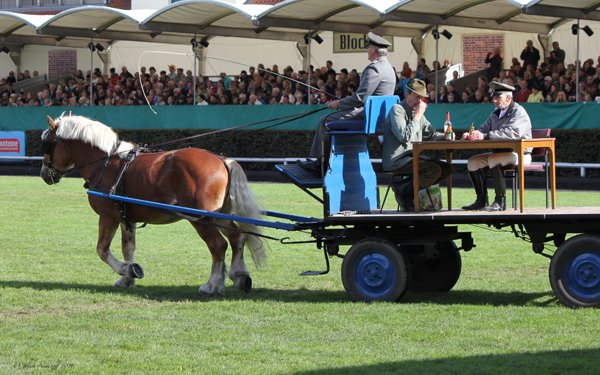
The mobile bar. Photo by Jessica Nemzoff
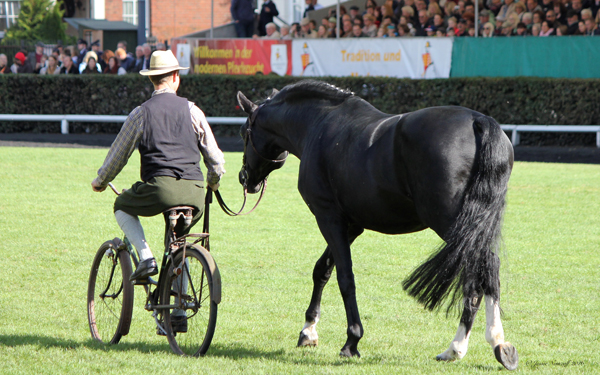
Horse led by bicycle. Photo by Jessica Nemzoff
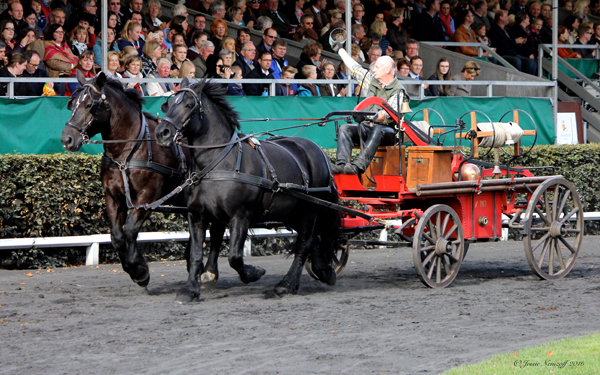
Fire-fighting horses. Photo by Jessica Nemzoff
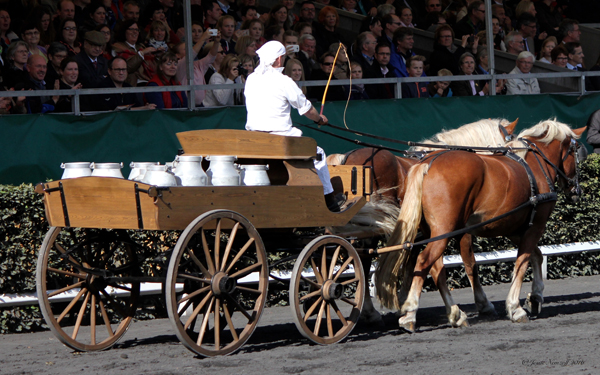
Delivering fresh milk. Photo by Jessica Nemzoff
As the need for horses in everyday working tasks continued to decline, the Landgestüt Celle began primarily focusing on the development of sport horses throughout the German breeding programs. Below are photos from the spectacular demonstrations of athleticism that sport horses in Germany possess – in both dressage and show jumping, among many other disciplines.
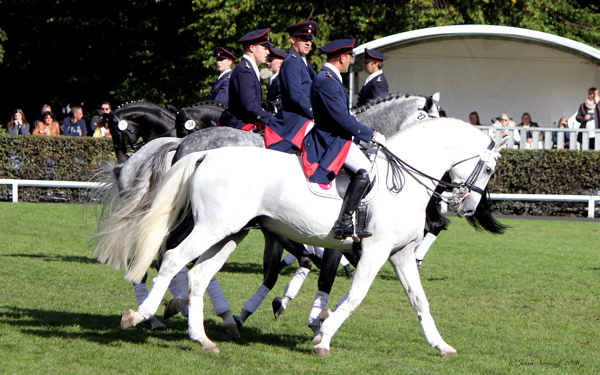
Starring in the Preuβen-Quadrille were perfectly paired black and white stallions including: Don Index, Grey Top, Heinrich Heine, Diacontinus, Silberschmied, and Avatar. Photo by Jessica Nemzoff
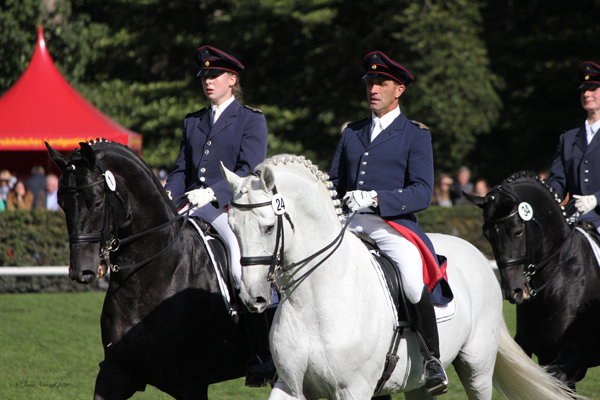
Don Index (#1) and Grey Top (#24) lead the way in the Preuβen-Quadrille. Photo by Jessica Nemzoff
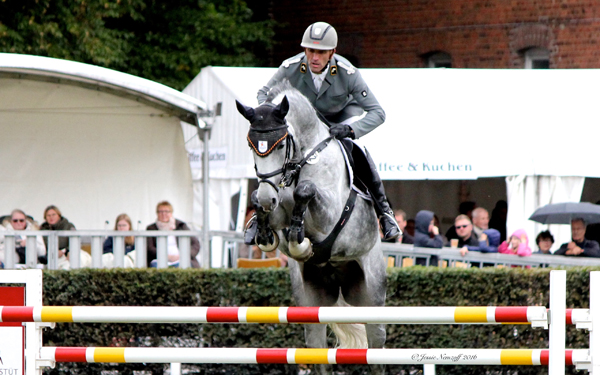
Diacontinus demonstrates flawless jumping technique. Photo by Jessica Nemzoff
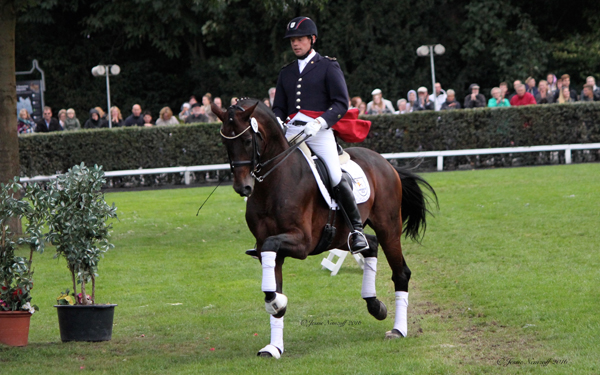
Don Darius makes it look effortless. Photo by Jessica Nemzoff
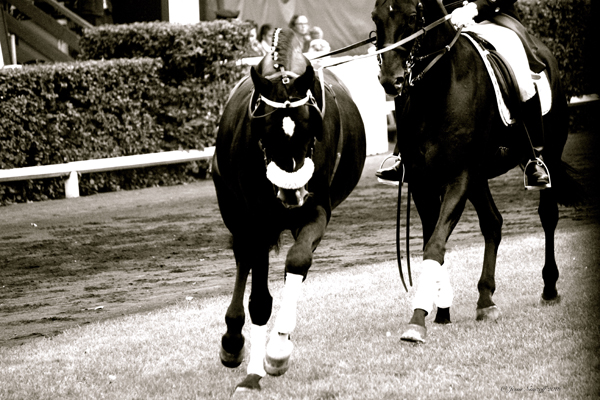
Fitzgerald (front) and Comte (back) in the Landgestüt weltweit. Photo by Jessica Nemzoff
ADVERTISEMENT
Horses in this day and age are used not only for sport, but also for police work. The fearlessness that the police horses (Polizeiarbeit) exhibited was incredible. The tasks they were so willing to do included literally walking through fire, galloping with flags covering their faces, and allowing someone to stand on their back while shooting a gun—just to name a few.
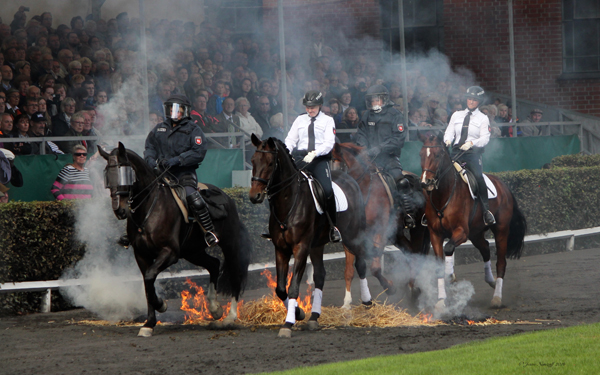
Fearless police horses walk through fire! Photo by Jessica Nemzoff
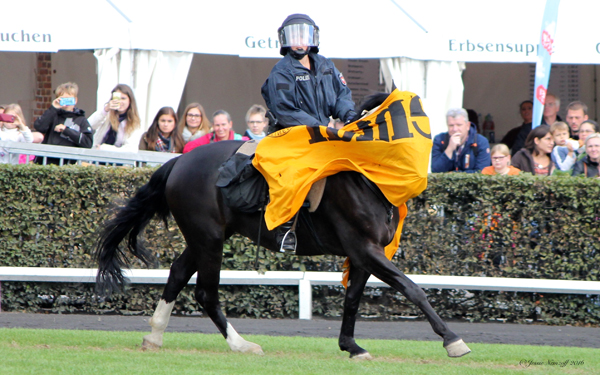
Police horses have remarkable trust in their riders to blindly (literally) lead the charge. Photo by Jessica Nemzoff
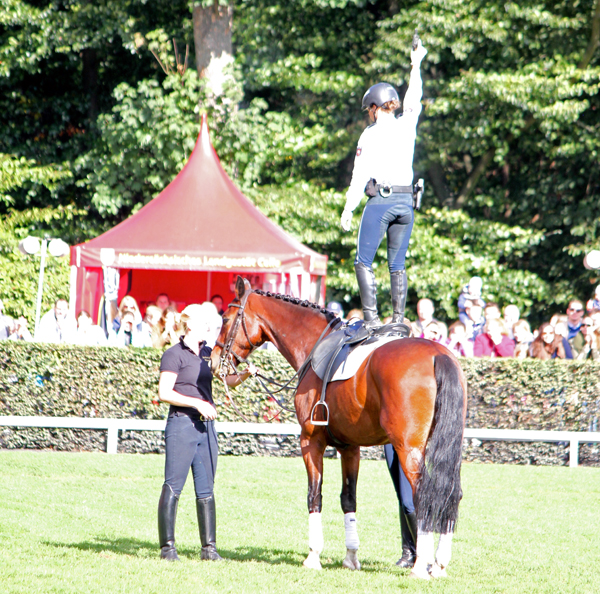
A policewoman shoots a gun while standing on top of her brave horse. Photo by Jessica Nemzoff
Before I get to the grand finale of the Hengstparade, first there is the rider who rides two horses at once, going at mock speed with one foot on each horse. I am not exactly sure when or how in the past this riding technique was used, but what I do know is that it was extremely impressive!
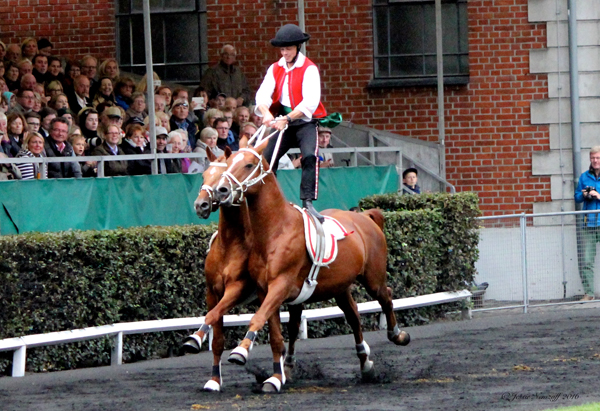
The ultimate balancing act. Photo by Jessica Nemzoff
Now for that grand finale—the Groβe Dressurquadrille—there are really no words to describe it, so instead I will attempt to relay the experience through photos and videos. In the Groβe Dressurquadrille, the following 24 stallions performed a quadrille that was flawlessly executed:
(Stallion, v. Sire)
- Don Index v. Don Crusador
- Fürstbishof v. Fürst Romancier
- Viscount v. Valentino
- Rotspon v. Rubenstein
- Silberschmied v. Sunlight
- Dancier v. De Niro
- Dostojewski v. Don Henrico
- Dr. Watson v. Diamond Hit
- Störtbekers Rubin v. Stolzenburg
- Comte v. Contendro
- Qualito v. Quaid I
- Buckingham v. Bordeaux
- Spörken v. Sir Donnerhall I
- Wishing Luck v. Windhauch xx
- Don Darius v. Don Frederico
- Gandhi v. Gribaldi
- Livaldon v. Vivaldi
- Lontano v. Londonderry
- Donatus v. Don Frederico
- Londontime v. Londonderry
- Avatar v. Avagon
- Diacontinus v. Diarado
- Rio Novo v. Rotspon
- Grey Top v. Graf Top

Buckingham (v. Bordeaux) (#25) first in line during the Groβe Dressurquadrille. Photo by Jessica Nemzoff
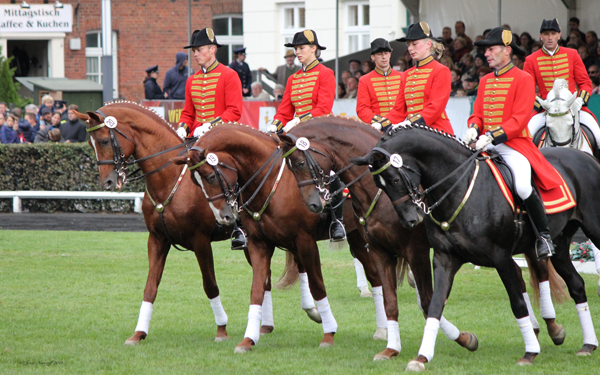
Livaldon (v. Vivaldi) (#17), Lontano (v. Londonderry) (#18) Donatus (v. Don Frederico) (#19), and Londontime (v. Londonderry) (#20) during the Groβe Dressurquadrille. Photo by Jessica Nemzoff
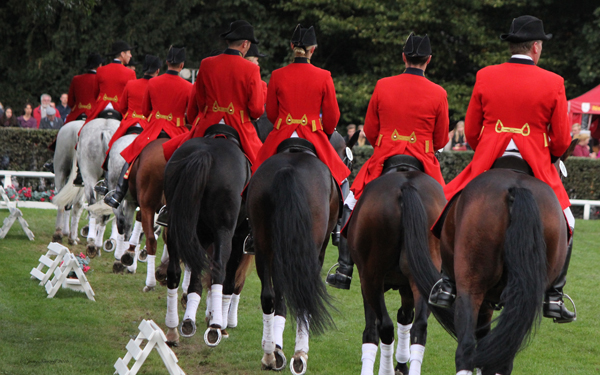
Perfect coordination. Photo by Jessica Nemzoff
To see the videos from the Groβe Dressurquadrille, click here.
Moral of the story is, if you ever have the chance to go to the Hengstparade at the Landgestüt Celle, go!
Jessica Nemzoff has focused on riding and developing young horses as hunters, jumpers and equitation horses, working for for Rivers Edge—Scott Stewart and Ken Berkley for most of the last decade. She’s also lived and ridden in Holland, galloped racehorses for Michael Matz’s Vintage Farm and grew up riding ponies at Brownland Farm. She’s currently in Germany for the Hannover-Rider Exchange Program.
Jessica also blogged for the Chronicle in 2010, when she traveled to the Netherlands to work for a sales barn for three months. You can read those blogs here.














